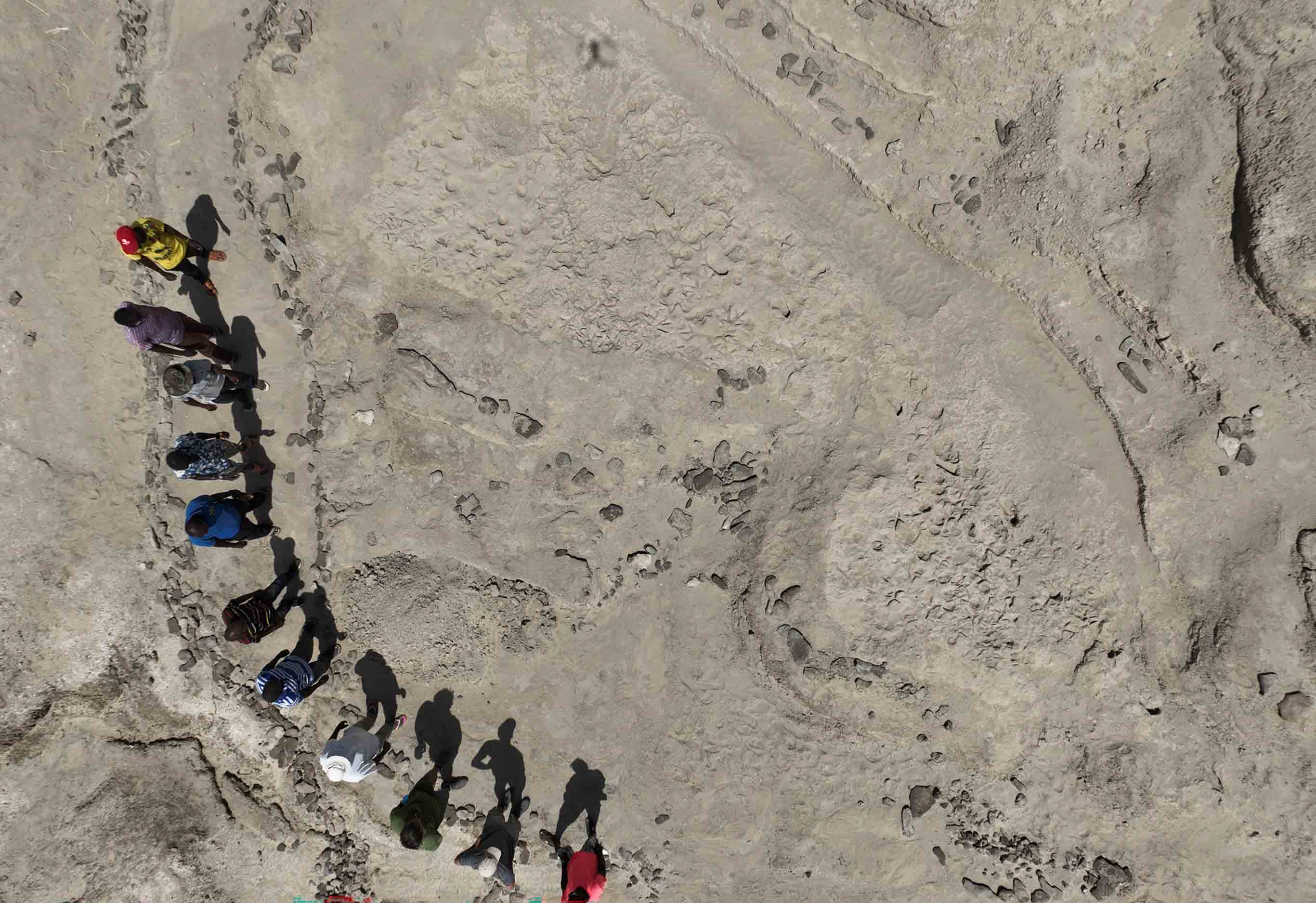More than a million years ago, on a hot savannah teeming with wildlife near the shore of what would someday become Lake Turkana in Kenya, two completely different species of hominins may have passed each other as they scavenged for food.
Scientists know this because they have examined 1.5-million-year-old fossils they unearthed and have concluded they represent the first example of two sets of hominin footprints made about the same time on an ancient lake shore. The discovery will provide more insight into human evolution and how species cooperated and competed with one another, the scientists said.
While cleaning the top layer […] spotted […] hominin footprint […] interpreted the depositional setting of the footprint surface, narrowing down the passage of the track makers to a few hours […] Homo erectus [persisted for 1 million years more] and Paranthropus boisei [went extinct within the next few hundred thousand years], the two most common living human species of the Pleistocene Epoch [2 580 000 to 11 700 years ago…] “The idea that they lived contemporaneously may not be a surprise. But this is the first time demonstrating it.”
Doesn’t matter, had snu snu.
The spirit is willing, but the flesh is spongy, bruised.




